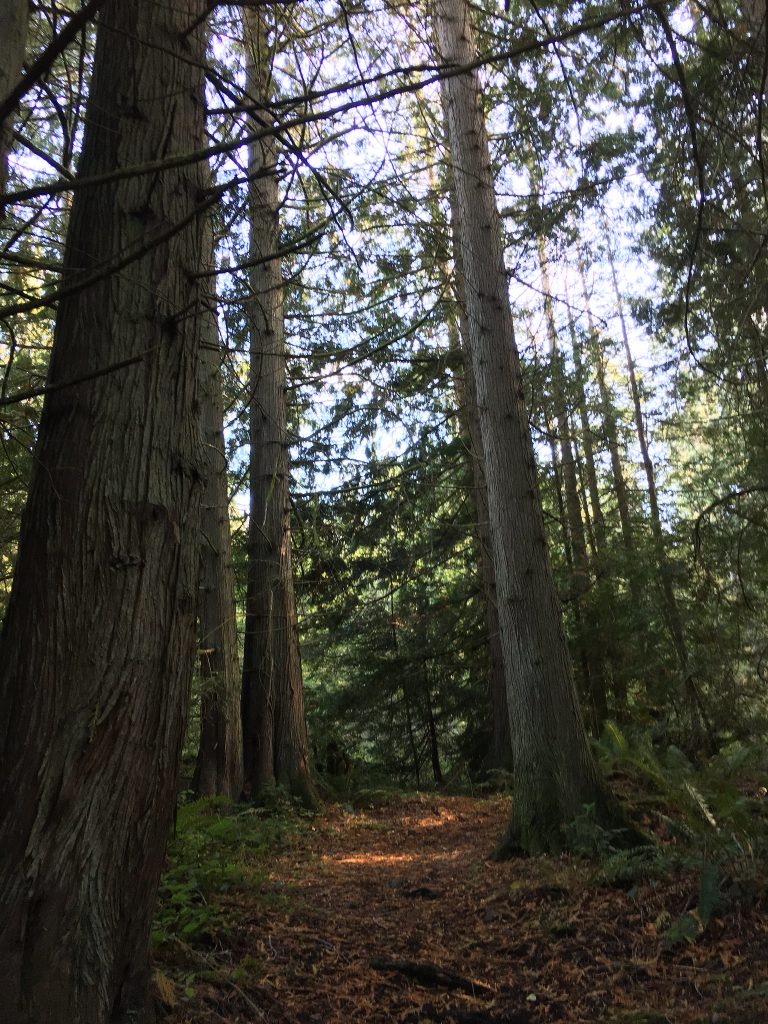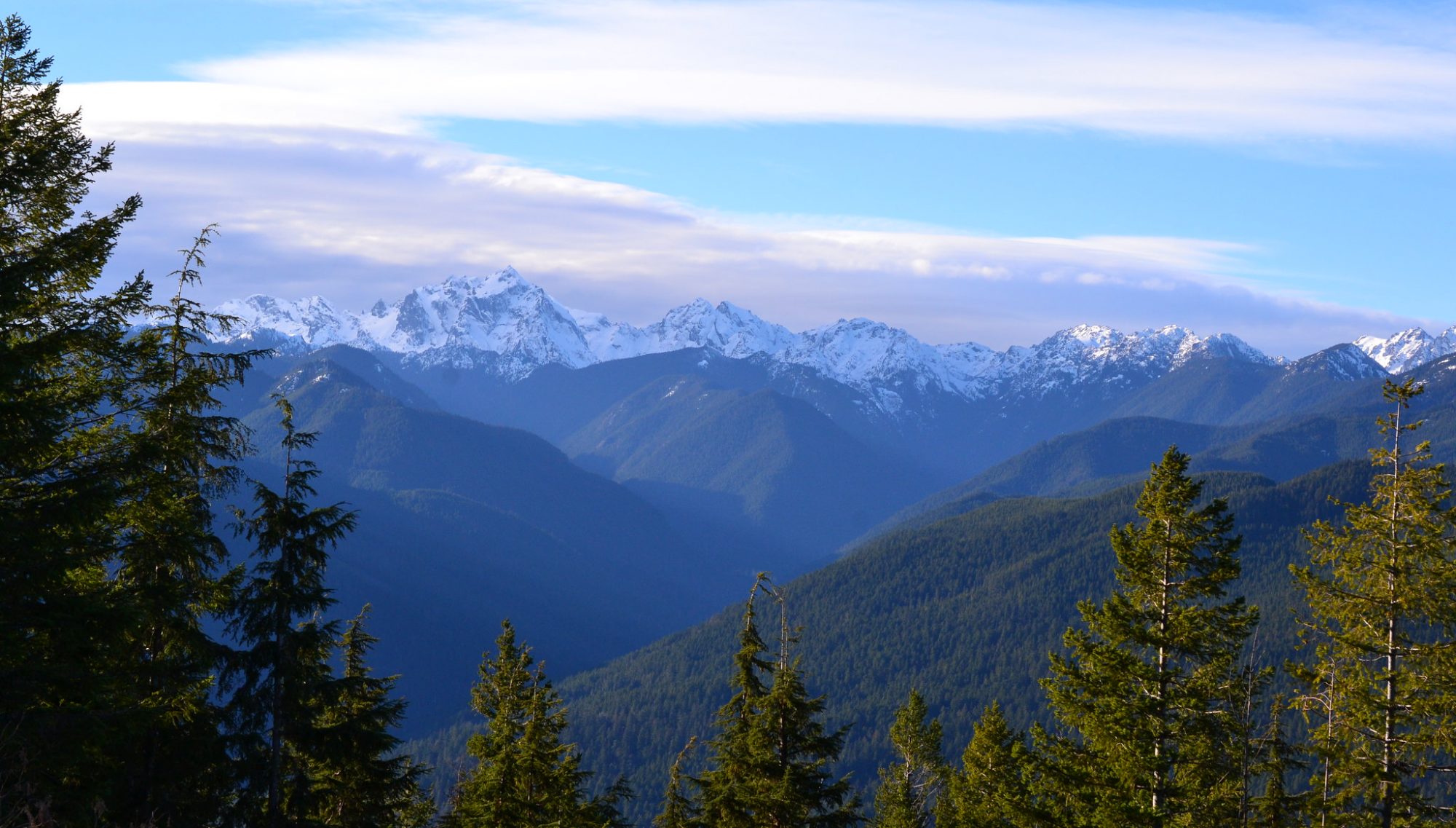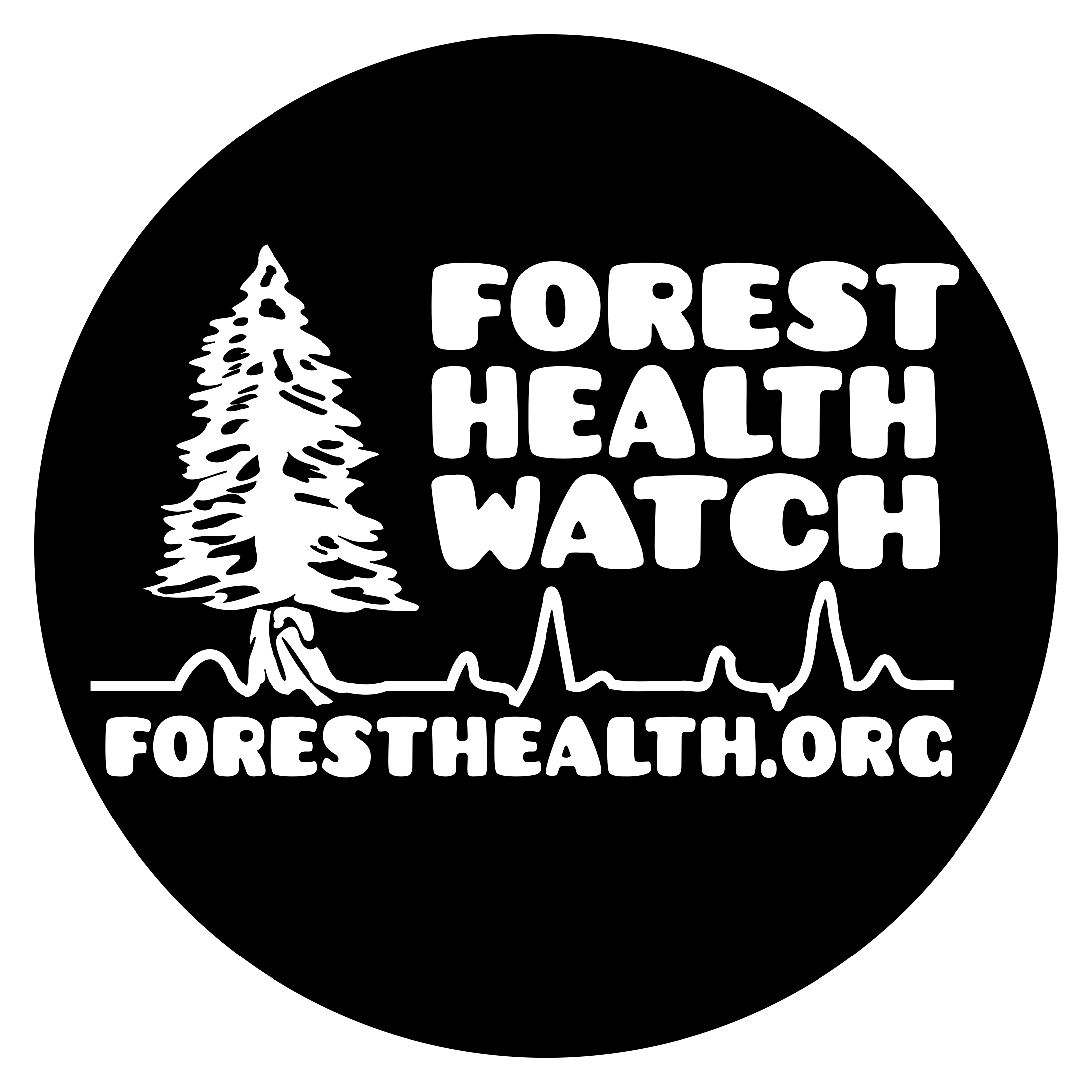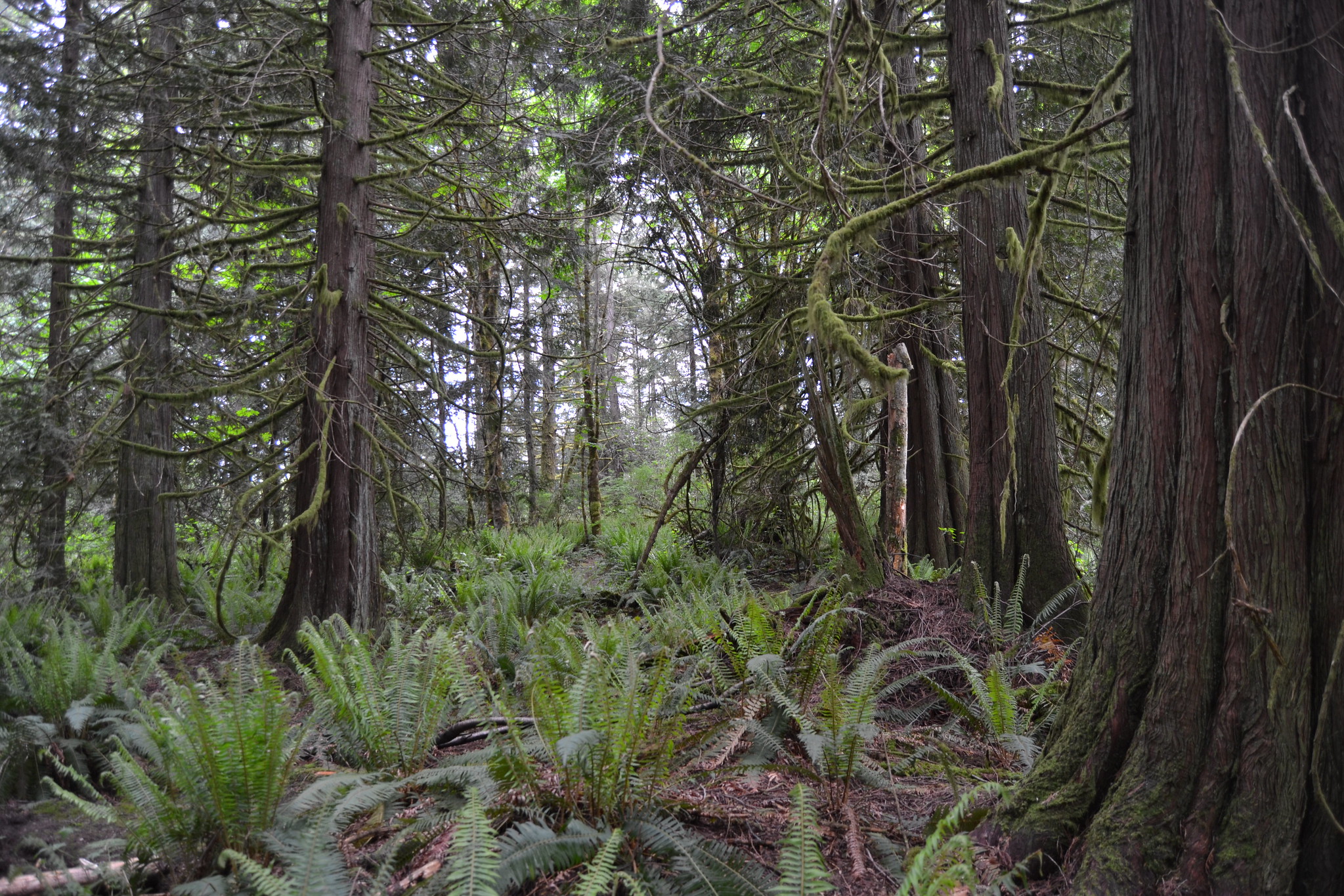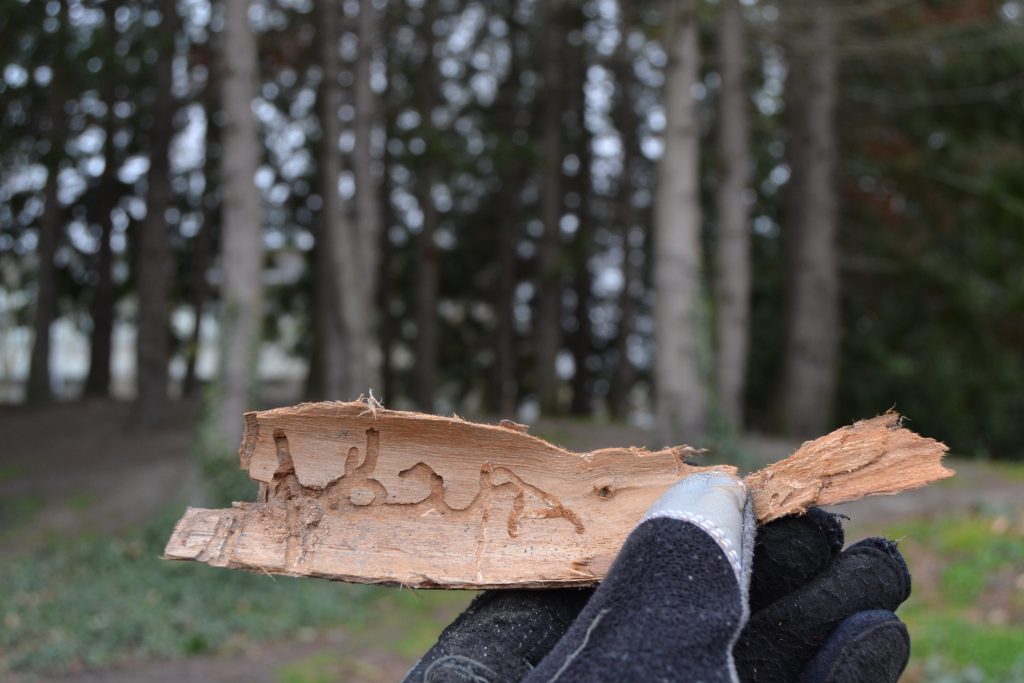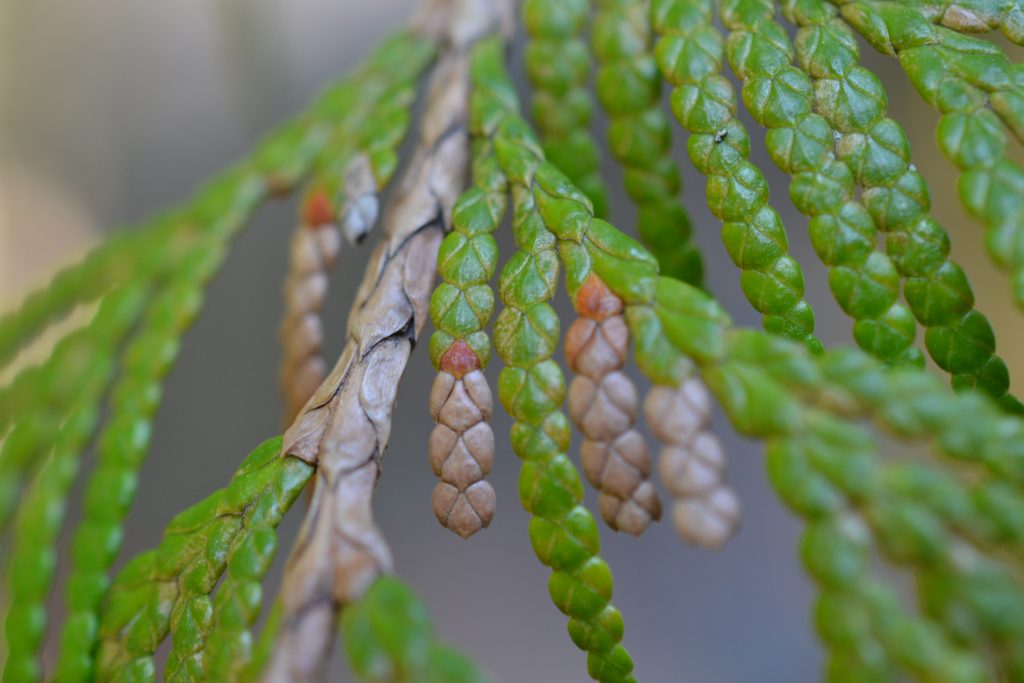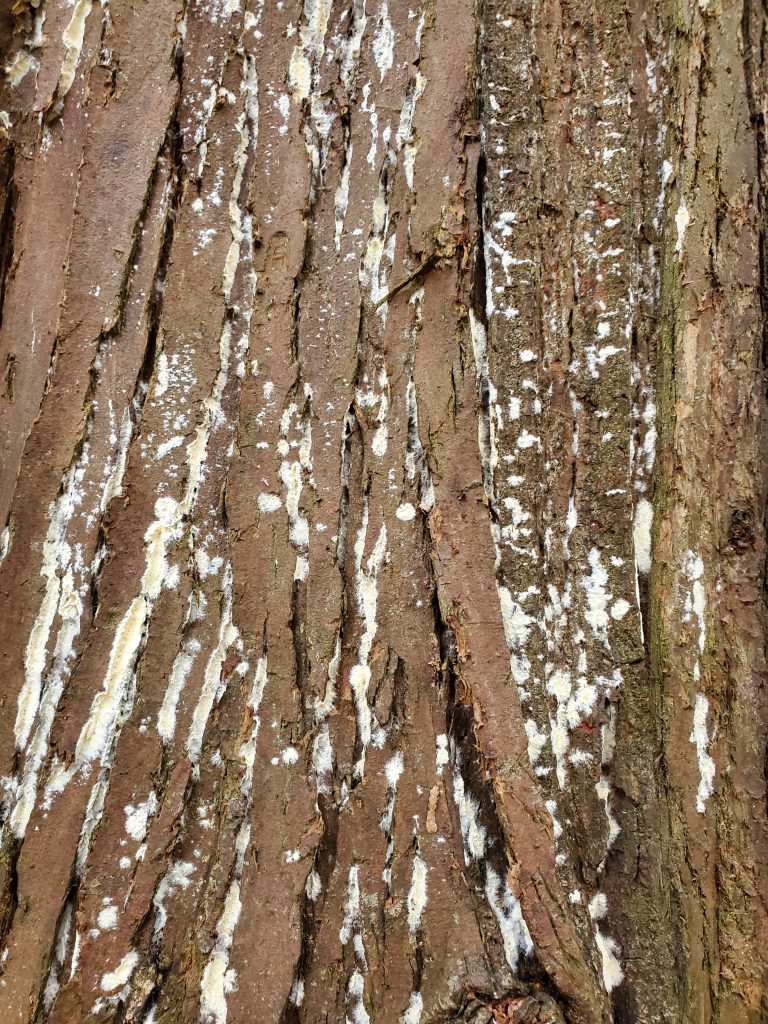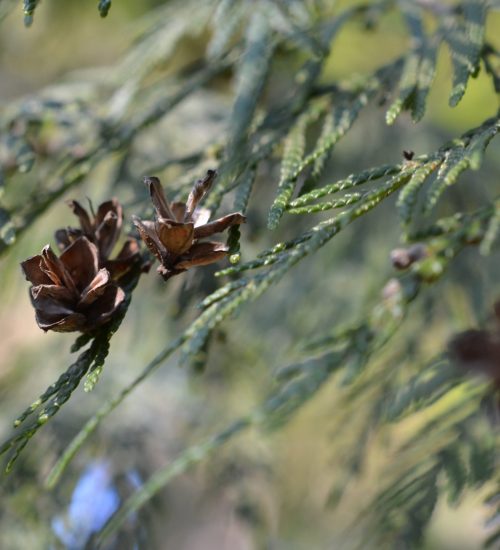Icon of Northwest Forests
Western redcedar is an important and unique component of northwest forests.
It has unmatched resilience to physical and biological disturbances, sometimes living more than a thousand years. Its durability and strength are impressive. For example, we often see mature trees with massive fire scars that have persisted many decades from tiny strips of living tissues.
Western redcedar is also cherished for its massive size, occasionally surpassing 200ft in height and 20ft in diameter!
Although many of these great giants are nearly impossible to age because of their great bulk and common heart rot, fallen trees can remain intact and persist in the habitat for hundreds of years (see Historical Image).
